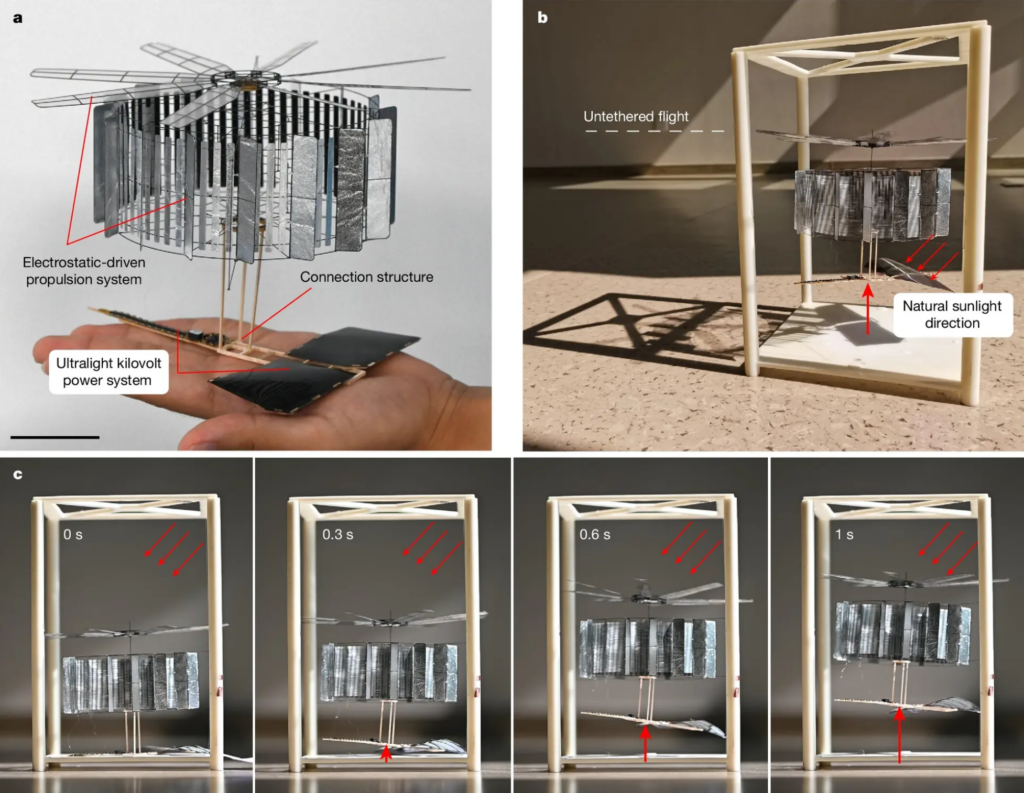Researchers at China’s Beihang University and the Center of Advanced Aero-Engine have introduced CouloumbFly, a palm-sized miniature rotorcraft that weighs just 4.21g with a rotor diameter of 20cm, making it 600 times lighter than any other small solar-powered drone.
The miniature rotorcraft is so much lighter and efficient that it can lift its own mass given nothing but sunlight. Under natural sunlight conditions, CouloumbFly got itself airborne within a second and managed flight for an hour without power diminishing until it came down because of a mechanical failure.
What makes it remarkable is its ability to generate its own lift, and manage that on solar energy alone, which is an extraordinary feat.
To make it happen, researchers developed and put on it a propulsion system, including an insanely lightweight, stripped-down electric motor weighing just 1.52g that drives the 0.44g top rotor.
There are flappy-looking foil-covered tabs hanging around the outside of the airframe, which are the positive and negative stator plates of an electrostatic motor. Meanwhile, the rotor is the fence-like series of 64 thinner vertical tabs behind the stator plates.
This kind of electric motor harnesses electrostatic fields instead of magnetic fields for motion that are often seen used as sensors in microelectromechanical systems (MEMS). In this application, they help to remove all the weight of magnetic coils and rotors.
A rotor blade contacts an electrode plate to make a capacitor between the rotor. Then, the next electrode plate will be formed to determine the amount of charge the rotor blade can transfer each time.
The charged rotor blade subjected to electrostatic force in the electric field moves to the next electrode plate. The polarity of the rotor blade and the direction of the electrostatic field change ensure that the driving torque on the whole rotor remains consistent to keep the electrostatic motor rotating continuously.
The base of the drone has two super-thin solar panels with 4cm square per each, generating about 4.5V under sunlight, which is fed through a 12-stage voltage multiplier and transformer to increase that 4.5V up closer to 9,000V, which is then sent into the stator panels. The aircraft is still in the early stages of development as the technology needs to solve limitations with sunlight availability and humidity.
Article and Image Source: nature.com & Science X Network


